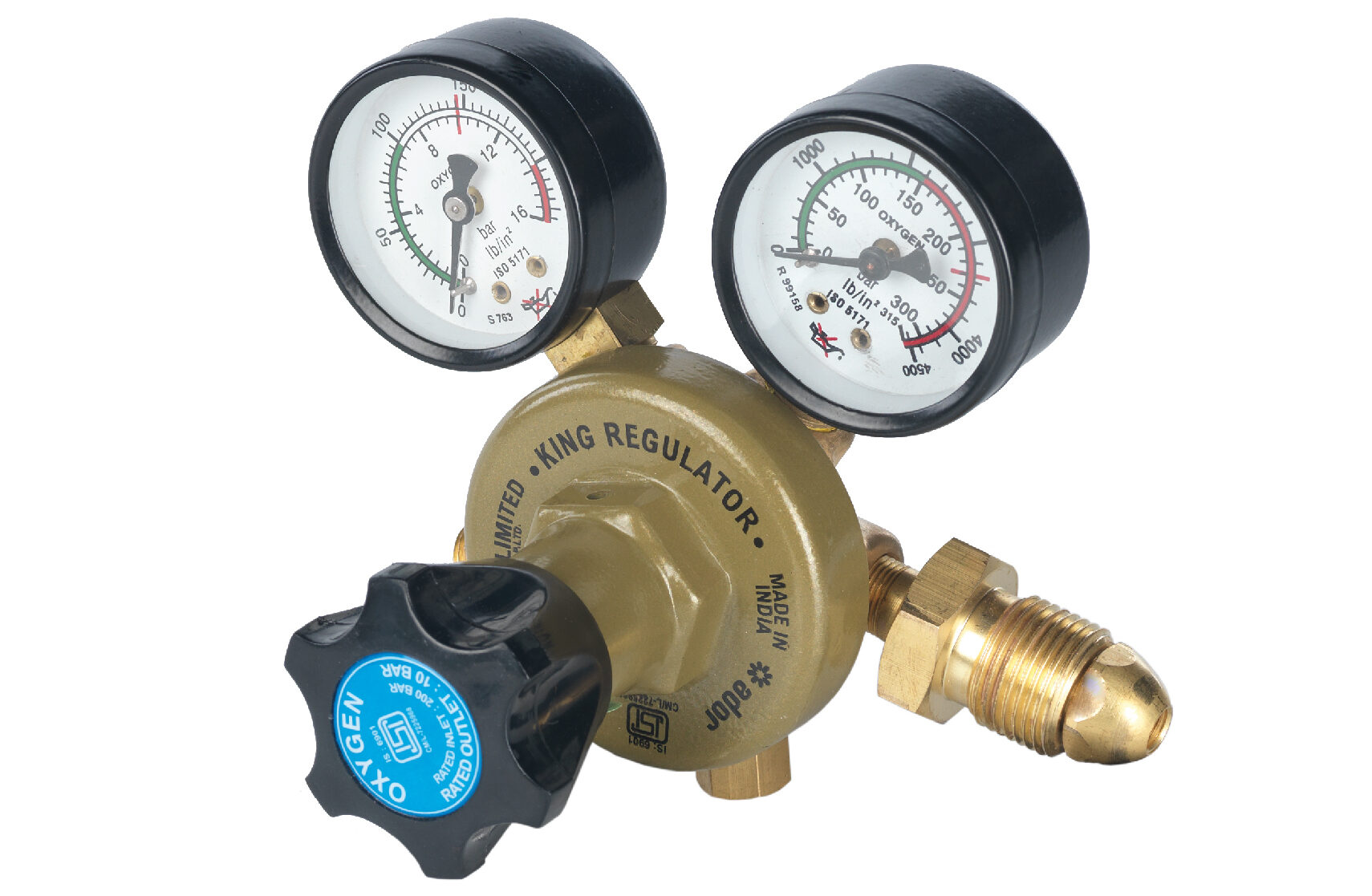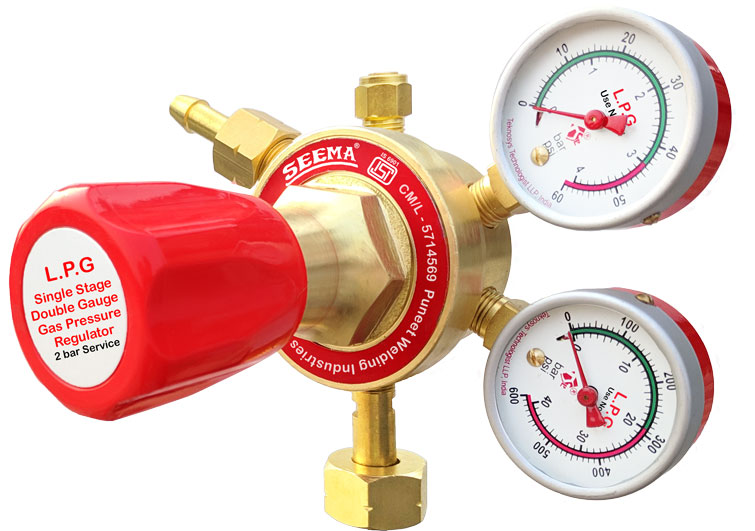Mastering Precision: The Role and Evolution of Single Stage Regulator Manufacturers
- 1 Understanding Single-Stage Regulators
- 2 The Significance of Single-Stage Regulator Manufacturers
- 2.1 Precision Engineering and Manufacturing Excellence
- 2.2 Adherence to Stringent Standards and Regulations
- 2.3 Customization to Meet Diverse Industry Needs
- 2.4 Innovation in Materials and Design
- 2.5 Quality Assurance and Testing Protocols
- 3 Evolution of Single-Stage Regulator Technology
- 3.1 Digital Pressure Control
- 3.2 Smart Regulators with Connectivity
- 3.3 Materials Science Innovations
- 3.4 Integrated Safety Features
- 3.5 Efficiency Through Computational Fluid Dynamics (CFD)
- 4 Choosing the Right Single-Stage Regulator
- 4.1 Gas Compatibility
- 4.2 Pressure Range and Accuracy
- 4.3 Material Compatibility
- 4.4 Application-Specific Features
- 4.5 Regulatory Compliance
- 5 Conclusion: Pioneering Precision in Gas Regulation
Behind these critical devices are manufacturers dedicated to precision engineering and innovation. We delve into the significance, functionalities, and evolution of single-stage regulator manufacturers, shedding light on their pivotal role in industries ranging from healthcare to manufacturing.
Understanding Single-Stage Regulators
A single-stage regulator is a control device designed to reduce the pressure of a gas from a high, variable inlet pressure to a lower, stable outlet pressure. This process occurs in a single step, distinguishing it from dual-stage regulators that perform pressure reduction in two stages, offering enhanced precision. Single-stage regulators are widely used across diverse sectors due to their simplicity, reliability, and cost-effectiveness.
Core Components and Mechanisms
The fundamental components of a single-stage regulator include a diaphragm, a pressure adjustment mechanism, and an orifice through which the gas flows. The diaphragm acts as a sensing element, responding to changes in outlet pressure. As the outlet pressure approaches the desired level, the diaphragm restricts the flow of gas, maintaining a stable pressure.
Applications Across Industries
Single-stage regulators find applications in a myriad of industries, each with specific demands for gas pressure control. From welding and metal fabrication to healthcare and laboratory settings, these regulators play a crucial role in ensuring the safe and efficient use of gases.
The Significance of Single-Stage Regulator Manufacturers

Behind every reliable single-stage regulator is a manufacturer dedicated to precision engineering, quality assurance, and continuous innovation. Let’s explore the key aspects that make single-stage regulator manufacturers indispensable in today’s industrial landscape.
Precision Engineering and Manufacturing Excellence
Manufacturing single-stage regulators requires a meticulous approach to precision engineering. Manufacturers leverage advanced machining techniques, quality materials, and stringent quality control processes to ensure the reliability and accuracy of their products. Every component, from the diaphragm to the pressure adjustment mechanism, is crafted with precision to withstand the rigors of varied industrial environments.
Adherence to Stringent Standards and Regulations
In the realm of gas regulation, safety is paramount. Reputable single-stage regulator manufacturers adhere to stringent industry standards and regulations. Whether it’s compliance with ISO standards or specific certifications for different applications, manufacturers prioritize the safety and reliability of their products.
Customization to Meet Diverse Industry Needs
Industries have diverse requirements when it comes to gas pressure control. Single-stage regulator manufacturers recognize this diversity and often offer customization options. Whether it’s adjusting pressure ranges, choosing specific materials, or incorporating industry-specific features, manufacturers tailor their products to meet the unique needs of different sectors.
Innovation in Materials and Design
The evolution of materials and design in single-stage regulators reflects the commitment to innovation among manufacturers. Advanced alloys, corrosion-resistant coatings, and ergonomic designs contribute to the durability and longevity of these regulators. Manufacturers continually explore new materials and design enhancements to improve performance and efficiency.
Quality Assurance and Testing Protocols
Reliability is non-negotiable when it comes to gas regulation. Established single-stage regulator manufacturers implement robust quality assurance processes and rigorous testing protocols. Each regulator undergoes thorough testing to ensure it meets or exceeds specified performance parameters. This commitment to quality instills confidence in end-users, assuring them of the precision and dependability of the products.
Evolution of Single-Stage Regulator Technology
As industries evolve, so does the technology associated with single-stage regulators. Manufacturers embrace innovation to enhance performance, user-friendliness, and overall efficiency. Let’s explore the technological advancements that have shaped the landscape of single-stage regulator manufacturing.
Digital Pressure Control
The integration of digital pressure control technology marks a significant leap forward. Digital pressure regulators allow for precise and programmable control of gas pressure. This level of control is particularly advantageous in applications where maintaining a specific pressure profile is critical.
Smart Regulators with Connectivity
The advent of the Internet of Things (IoT) has found its way into the realm of gas regulation. Smart regulators equipped with connectivity features enable remote monitoring and control. Users can access real-time data, set pressure parameters, and receive alerts, enhancing both convenience and safety.
Materials Science Innovations
Advancements in materials science have led to the development of high-performance materials for regulator construction. These materials offer enhanced durability, corrosion resistance, and the ability to withstand extreme conditions. The use of composite materials and advanced alloys contributes to the overall efficiency and longevity of single-stage regulators.
Integrated Safety Features
Safety remains a top priority in gas regulation, and manufacturers continually integrate advanced safety features into their regulators. From built-in pressure relief valves to fail-safe mechanisms, these safety features add an extra layer of protection, mitigating risks associated with pressure fluctuations.
Efficiency Through Computational Fluid Dynamics (CFD)
Computational Fluid Dynamics is employed in the design and optimization of regulator internals. By simulating the flow of gas through the regulator, manufacturers can fine-tune designs to achieve optimal performance. This computational approach contributes to efficiency gains and improved pressure control.
Choosing the Right Single-Stage Regulator
Selecting a single-stage regulator involves considerations beyond the manufacturer’s reputation. End-users must assess specific needs, compatibility with gases, and application requirements. Here are key factors to consider when choosing a single-stage regulator:
Gas Compatibility
Different gases have distinct properties and requirements for pressure regulation. Ensure that the chosen regulator is compatible with the specific gases used in your application.
Pressure Range and Accuracy
Evaluate the required pressure range and the desired level of accuracy. Different applications demand precise pressure control, and regulators are available with varying pressure ratings and accuracy specifications.
Material Compatibility
Consider the materials used in the construction of the regulator, especially if it will come into contact with corrosive or reactive gases. Opt for materials that ensure compatibility and longevity.
Application-Specific Features
Certain applications may benefit from specific features, such as integrated safety valves, digital pressure readouts, or remote control capabilities. Assess these features based on the needs of your application.
Regulatory Compliance
Ensure that the selected regulator complies with industry standards and regulations applicable to your specific use case. This is crucial for safety and regulatory compliance.
Conclusion: Pioneering Precision in Gas Regulation
Single-stage regulator manufacturers play a pivotal role in shaping the landscape of gas regulation across industries. Their commitment to precision engineering, adherence to safety standards, and continuous innovation contribute to the efficiency, reliability, and safety of gas usage. As technology advances, the future promises even more sophisticated and connected solutions, ensuring that single-stage regulators continue to be indispensable components in the world of gas control.

















